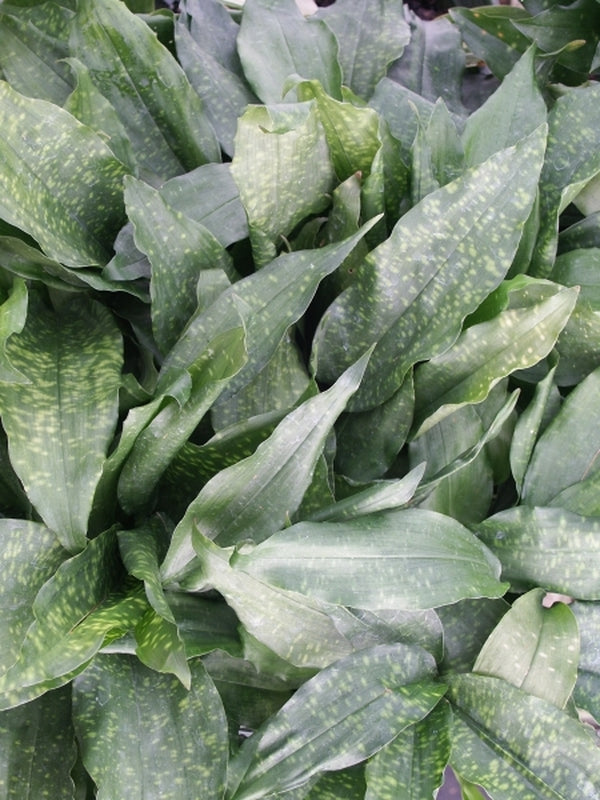Aspidistra fungilliformis 'China Star'
China Star Cast Iron Plant
This plant is not currently for sale. This is an archive page preserved for informational use.
Shop Available AspidistraItem #: 2115
Zones: 8b to 10b
Dormancy: Evergreen
Height: 4" tall
Origin: China
Pot Size: 3.5" pot (24 fl. oz/0.7 L)
(Aka: A. sp. QCSIIM-13) Aspidistra fungilliformis 'China Star' is a 1999 Plant Delights/JLBG introduction of a Jim Waddick's 1985 wild collection from the Qing Cheng San Mountains of Sichuan. Aspidistra 'China Star' is clothed with 8-10" long x 2.25" wide medium green leaves, heavily speckled with muted tiny yellow "freckles." Aspidistra 'China Star' makes a lovely groundcover where winter hardy via long-spreading rhizomes, which are home to the lovely white ground-hugging flowers in January. In colder climates, Aspidistra fungilliformis makes a superb, easy-to-grow, very low-light house plant.
Maintenance:
Aspidistra are very low maintenance perennials. Each leaf can last up to 3 years, but after the second year, it will begin to show signs of aging and leaf degradation. For that reason, we recommend removing all old foliage regularly to retain the attractiveness of the clump. It's always disappointing to see large patches of cast iron plants in public spaces where it hasn't been properly maintained.
Growing Conditions:
Cast iron plants grow well in both moist and dry soils as long as the drainage is good. Aspidistra must be grown in shade, since their foliage will scorch if they are subjected to sun. In the jungles where they grow, they are often seen in very deep shade.
In containers, they make superb house plants. The common name cast iron plant speaks to their durability in less than ideal conditions. Regular moisture, including increased humidity when they are grown as house plants, keeps them from getting stressed and becoming susceptible to spider mites.
Garden Value:
The bold texture and upright form of cast iron plants is invaluable in the garden, since there few other plants with this form and texture. Many have amazing flowers, produced at the base of the foliage, often in the winter months. While these flowers are rarely noticed in the garden, they can be quite attractive in the home.

-
Other Attributes
Genus: Aspidistra
Flower Color: White/Cream
Leaf Color: Green , Spotted/Speckled
Bloom Time: Winter
Container Role: Spillers
Garden Themes: Gnome Gardens , Green Roofs
Other: Drought Tolerant Plants , Dry Shade Plants , Groundcovers , Plant Delights Introductions , Plants from China , Tropical Looking Plants , Colored Foliage , Patterned Foliage , Plants Retiring This Year


